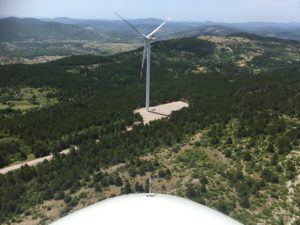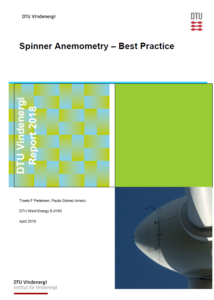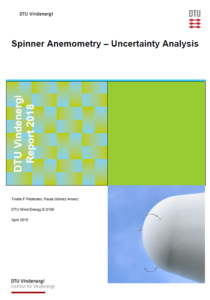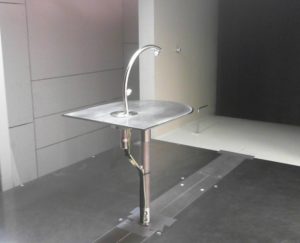>>>We found the final turbine type!<<<
[dropcap3]I[/dropcap3] n order to cover a broad variety of wind turbine types and to achieve statistical relevance of the PTP it is planned to install about 90 iSpin systems beginning summer 2017 in in total 9 different wind farms. The demonstration of the robustness and subsequently transferability of the iSpin STF should be evaluated for 3 different turbine types – each of them installed at wind farms in 3 different terrain classes like flat, semi-complex, complex or offshore and containing at least 8-10 turbines and most importantly an met mast suitable for power curve verification. Since June 2017 six wind farms including two different turbine types (Enercon E82-E2 and Vestas V112-3MW) have already been identified and equipped with in total 59 iSpin systems. Partially more than 18 months of combined met mast, iSpin and SCADA data has been collected. Finally, we managed to identify the 3rd turbine type to be the Vestas V90-3MW. For this turbine type we found sites with suitable met masts and located in a variety of terrains. In June 2019 the first wind farm with this turbine type has been equipped with 8 iSpin systems. All V90-3MW turbines will be equipped with the latest iSpin V4 version available on the market since March 2018. For all turbine types we looked for sites and turbine types matching the requirements for a meaningful demonstration of the STF robustness. A requirement specification which was used to check for existing sites the potential to be a PTP site as well as a short introduction to the PTP project can be found here.

Download the requirements for potential PTP wind farms
[/spb_text_block] [spb_text_block pb_margin_bottom=”no” pb_border_bottom=”no” width=”1/1″ el_position=”first last”]
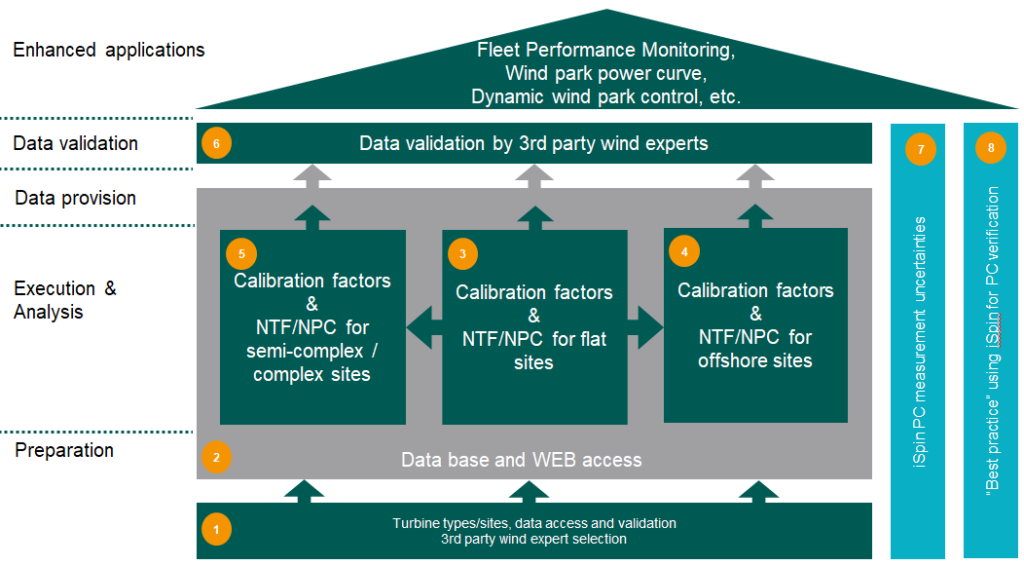
[/spb_text_block] [/spb_column] [blank_spacer height=”30px” width=”1/1″ el_position=”first last”] [divider type=”dotted” text=”Go to top” full_width=”no” width=”1/1″ el_position=”first last”] [blank_spacer height=”30px” width=”1/1″ el_position=”first last”] [spb_column width=”1/2″ el_position=”first”] [spb_text_block pb_margin_bottom=”no” pb_border_bottom=”no” width=”1/1″ el_position=”first last”]
Download iSpin Best Practise Report
[/spb_text_block] [/spb_column] [spb_text_block pb_margin_bottom=”no” pb_border_bottom=”no” width=”1/2″ el_position=”last”] [dropcap3]S[/dropcap3] pinner anemometry is used to measure traceable and calibrated wind speed, yaw misalignment and inflow angle. Free wind speed may be measured by application of a spinner wind speed transfer function. Spinner anemometer free wind speed measurements are used in power performance measurements according to the standard IEC61400-12-2 on use of nacelle anemometry. An improved procedure, developed specifically for power performance measurements with spinner anemometry, without considering the use of nacelle anemometry, is the aim of this document. The best practice description for spinner anemometry provides procedures for mounting, calibrations, measurements and uncertainty calculation. As such it could provide input to a separate IEC standard on wind speed, yaw misalignment and inflow angle measurements with spinner anemometry. This best practice procedure for wind measurements is used in the PTP demo project for power performance measurements on 90 wind turbines. The experience from the measurements will be used to demonstrate and support the further development of the best practice procedures. [/spb_text_block] [blank_spacer height=”30px” width=”1/1″ el_position=”first last”] [divider type=”dotted” text=”Go to top” full_width=”no” width=”1/1″ el_position=”first last”] [blank_spacer height=”30px” width=”1/1″ el_position=”first last”] [spb_text_block pb_margin_bottom=”no” pb_border_bottom=”no” width=”1/2″ el_position=”first”] [dropcap3]T[/dropcap3] he spinner anemometer is an integrated instrument on a wind turbine that can measure traceable calibrated and free wind speed according to the standard IEC61400-12-2. The uncertainty analysis of spinner anemometer wind speed measurements is due to the integrated six sensors and unlinear conversion algorithm rather complex. An uncertainty analysis method has been proposed which considers all potential influential parameters and derives uncertainty components that are relevant for the analysis. Due to the large variability of sonic sensor wind speed measurements and the accelerometer measurements during rotation and operation the regular GUM method for determination of sensitivity factors was not found feasible. Instead a simulation model was developed. It simulates the normal measurements of the spinner anemometer during operation of the wind turbine. A procedure for evaluation and expression of the uncertainty components on horizontal wind speed uncertainty was made. Combination of uncertainties was then performed with sensitivity factors equal to one and correlation coefficients assumed fully correlated or non-correlated. An example of uncertainty of measurements with a spinner anemometer was included. The results showed an overall standard uncertainty of 1.4% for horizontal wind speed measurements with the spinner anemometer. [/spb_text_block] [spb_column width=”1/2″ el_position=”last”] [spb_text_block pb_margin_bottom=”no” pb_border_bottom=”no” width=”1/1″ el_position=”first last”]
Download iSpin Uncertainty Analysis
[/spb_text_block] [/spb_column] [blank_spacer height=”30px” width=”1/1″ el_position=”first last”] [divider type=”dotted” text=”Go to top” full_width=”no” width=”1/1″ el_position=”first last”] [blank_spacer height=”30px” width=”1/1″ el_position=”first last”] [spb_column width=”1/2″ el_position=”first last”] [spb_text_block pb_margin_bottom=”no” pb_border_bottom=”no” width=”1/1″ el_position=”first last”]
Please click to download a certificate (PDF-Document)
[/spb_text_block] [/spb_column]

